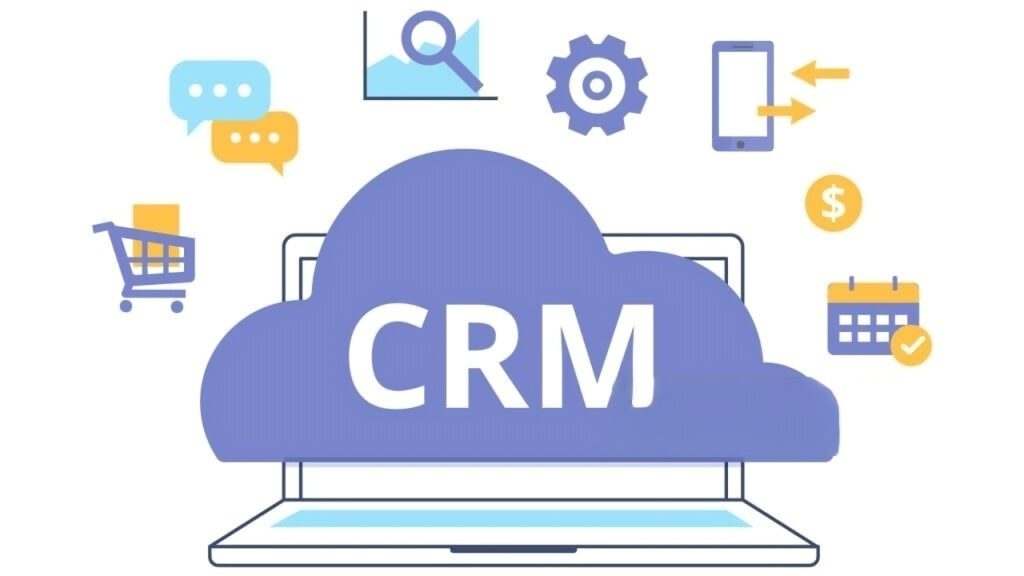
Healthcare, retail, fintech and SaaS teams all chase the same goals. Faster handoffs. Cleaner data. Clearer visibility from first touch to renewal. That is where crm software development steps in.
A well-built system ties sales, service and marketing together without forcing your people to jump between tools. It supports the way your company already works and grows with it.
Many teams start on a generic platform and then feel the limits. Fields do not match the process. Reports miss the real questions. Workarounds pile up. That is when leaders begin to consider custom crm development that fits the organization rather than the other way around. The aim is simple. Keep every interaction in one place, reduce re-entry and turn activity into outcomes.
This guide covers the essentials. We define the work of crm software development, explain why a customizable crm can be the right move, list the features that matter, show how to choose a crm software development company, clarify the role of a crm developer, map common risks and fixes and look ahead at what is coming next.
Table of Contents
ToggleWhat Is CRM Software Development
CRM software development is the craft of planning, building and refining a system that manages relationships with prospects and customers. It is not only a database of contacts.
It is a living workflow that records conversations, tracks deals, schedules follow ups, triggers tasks and feeds insights into every team that touches the customer.
Two paths exist in practice. You can configure a commercial platform or invest in custom crm development. Configuration suits common processes. Custom work suits teams with distinctive models, complex approvals or strict data controls. In both cases, the goal is the same. Put the right information in front of the right person at the right time, then keep the record clean from first touch to support.
A strong foundation contains three pieces. A clear data model that reflects how your business sells and serves. A set of workflows that match your steps for lead qualification, handoff and renewal and interfaces that make work faster, not heavier, for reps, managers and support.
Why Choose Custom CRM Development
No two companies run the same playbook. That is why a customizable crm can remove friction that generic setups create. The benefits come from fit, speed and control.
- Fit for your process
- Speed in daily work
- Control over data, security and scale
Tailored features
Generic tools carry a long list of options that you may never touch. Custom work trims the noise and adds what you truly need. That can mean role-based dashboards, multi-brand pipelines or approval flows that match your contracts.
Scales with growth
As volume rises, weak structures crack. A system built for your model handles more leads, more products and more regions without slowing down. You add modules when you need them and extend the model without breaking earlier work.
Connects your stack
A crm software development company can align the system with email, finance, inventory, marketing and support. When connections are planned early, you avoid silos and duplicate records later.
Improves adoption
People adopt tools that feel natural. When the screen mirrors the day-to-day steps of reps and agents, training time falls and data quality rises. Small details matter. Fewer clicks to log a call. Clear flags for risk. Direct links to the next action.
Strengthens security and compliance
With custom crm development, you decide how data is stored, who can see it, and how changes are tracked. That helps meet rules in finance and health and protects customer trust.
Teams that simplify screens and remove unused fields often report a drop-in data entry time of 15 to 25 percent, fewer missed follow ups and a lift in qualified pipeline within the first two quarters after going live.
Table: Custom CRM and Off the Shelf CRM
| Area | Custom CRM Development | Off the Shelf CRM |
| Fit to process | Built around your steps | You fit their defaults |
| Integrations | Planned and deep | Limited to pre-built options |
| Scale | Grows with the model | Follows vendor roadmap |
| User experience | Designed for your roles | Generic screens |
| Security | You set rules and audits | Vendor limits apply |
Key Features of a Customizable CRM
Every modern system manages contacts, companies, and deals. The advantage of a customizable crm is how those basics are shaped for your teams.
Contact and lead management
Capture complete history across phone, email, chat and web forms. Structure fields to match your industry. A lender cares about terms and collateral. A distributor cares about product mix and region. The system should reflect those facts.
Sales pipeline and opportunity tracking
Define stages that mirror your cycle. Trigger tasks on entry and exit. Forecast from weighted values and add confidence notes so managers can read risk briefly.
Task and activity management
Auto assign followups, sync calendars and batch reminders for renewals. Visibility into activity keeps coaching grounded in fact, not guesswork.
Customer support and help desk
Link tickets to the account record so agents see purchases, contracts and past issues. Use service level timers and alerts for high priority cases.
Marketing automation
Nurture sequences, scoring models, and preference centers belong near the record, not scattered across tools. Keep your consent model clear so every send is compliant.
Analytics and reporting
Move beyond totals. Give each role the three numbers that matter for their day. For a rep, next meetings, at risk deals and open tasks. For a manager, coverage, conversion by stage, and cycle length by segment.
Integrations
Connect the system to billing, inventory, quoting, e signature and support chat. When data moves both ways, teams stop asking for exports and spend time with customers instead.
In multi-step B2B cycles, teams that add stage specific exit criteria see error rates in handoffs drop into single digits. Clear definitions replace debate.
Insight: Dashboards should show trend lines and exceptions. The number is helpful. The direction and the outliers change decisions.
Table: Features That Drive Outcomes
| Feature | Why It Matters | Example Metric |
| Contact and lead model | One view of truth | Duplicate rate below 2 percent |
| Pipeline with rules | Fewer stalled deals | Stage aging within target range |
| Task automation | Predictable follow up | On time task rate above 90 percent |
| Support integration | Faster resolutions | First response time within SLA |
| Role based dashboards | Focus on what matters | Coaching time spent on top three gaps |
| Bi directional integrations | No re entry | Manual exports near zero |
How To Choose A CRM Software Development Company
The partner you choose will shape outcomes long after launch. Look for a builder that understands your process, works well with your people and proves value in small steps.
Proven delivery
Ask for recent work that looks like your use case. Review timelines, budgets and the business result, not only the tech stack.
Process understanding
Strong vendors interview sales, finance and support before they draw any screens. They capture edge cases and bake them into the design.
True customization
Some firms only configure. Others can extend the model, write services and build integrations. Confirm that capability early.
Integration depth
You will rely on connections. Request a list of past integrations and how they tested data flow and failure modes.
Support plan
A crm software development company should offer maintenance, enhancements, and a clear path for upgrades. You want a partner who will stay through adoption, not only delivery.
Reputation
Check references, repeat clients and how they handle change requests. A steady partner will tell you what not to build and why.
Example: During vendor selection, run a two-week paid pilot that delivers one working slice. For instance, a meeting pipeline with real data and one live dashboard. Use that slice to evaluate collaboration and speed.
Result: Buyers who run a short pilot before full scope commonly report fewer change orders later and a smoother rollout to the first group of users.
The Role of a CRM Developer
A crm developer turns requirements into the screens, services and data structures that people use every day. The work blends design sense with software skill.
Core responsibilities
- Shape the data model so it reflects the business
- Build screens and forms that make work faster
- Write automations and services for rules and routing
- Integrate external tools through secure APIs
- Implement permissions, logs and audits
- Test with users and refine based on feedback
Collaboration that works
Give developers real examples. A contract approval path. A discount rule. A support escalation. Concrete cases produce clear logic and fewer surprises.
Insight: Good developers ask why before how. When the team explains the underlying goal, the solution often becomes simpler, cheaper and easier to support.
Common Challenges and How to Avoid Them
Data migration
- Old spreadsheets and legacy systems hide duplicates and missing fields.
- Clean and standardize before import
- Run small test loads
- Reconcile counts and spot check records
User adoption
People avoid tools that slow them down.
- Involve a pilot group early
- Trim fields that add no value
- Provide short guides, not long manuals
Integration complexity
Connections break when assumptions are unclear.
- Document source and target rules
- Test failure paths and retries
- Monitor sync health from day one
Scope creep
Ideas grow as you build.
- Lock a minimum viable scope for the first release
- Park extra ideas in a backlog
- Add in planned waves
Budget drift
Estimates move when uncertainty remains high.
- Ask for a transparent breakdown
- Keep a small contingency
- Review progress weekly with a shared board
Stats: Teams that ship an initial slice in twelve to sixteen weeks and then add features in two to four week increments often report steadier budgets and faster visible wins than big bang projects.
When end users join design sessions and see clickable prototypes, acceptance testing time drops and change requests shift earlier where they cost less.
Define three success measures before you start. For example, time to first response, qualified pipeline coverage and invoice accuracy. Track them monthly after launch.
Implementation Roadmap You Can Follow
A practical plan keeps strategy honest. Use these stages and keep each one boxed.
- Discover and align
Capture the process map, roles and definitions. Confirm scope. List integrations and the order in which they matter. - Design the model and flows
Agree on objects, fields, permissions and stage rules. Sketch the key screens for each role. - Build the first slice
Choose one high value flow. For many teams that is lead to meeting or ticket to resolution. Build it, test it with real data and refine it. - Integrate priority tools
Connect email, calendar and one system of record like billing or inventory. Keep the list short. Prove stability before adding more. - Train the first group
Deliver short sessions and quick reference cards. Focus on the tasks they do every day. - Roll out in waves
Expand to more users and add features by wave. Keeping feedback loops open and visible.
Insight: Your first slice sets the tone. Make it small, real and measured. Early success builds trust for the next waves.
Result: A staged rollout avoids the usual dip in productivity. Teams keep serving customers while the system grows under them.
Future of CRM Software Development
CRM platforms are getting smarter and more connected. The trend is toward systems that anticipate needs and remove routine work.
- Predictive scoring suggests where to focus
- Next best action guides reps and agents
- Voice capture turns conversations into notes
- Real time alerts draw attention to exceptions
- Privacy controls give customers clearer choices
The most durable gains come from basics done well. Clean data. Simple screens. Clear rules. Then add intelligence where it helps decisions, not as a layer that distracts from the work.
Final Thoughts
Choosing crm software development is a strategic decision. It shapes how your teams sell, serve and learn from every interaction. A customizable crm aligns screens and rules with the way you work, connects the tools you rely on and scales as you grow.
The right crm software development company will start small, prove value with one working slice, and stand with you through adoption and expansion. A skilled crm developer will keep the model clean, the screens simple and the integrations strong.
Plan for the usual risks. Clean data early, involve users, and ship in waves. Measure a few outcomes that matter and review them every month.
With that approach, your system stops being another app and becomes a reliable engine for growth and service. Build it with care and it will support your customer strategy for years to come.


